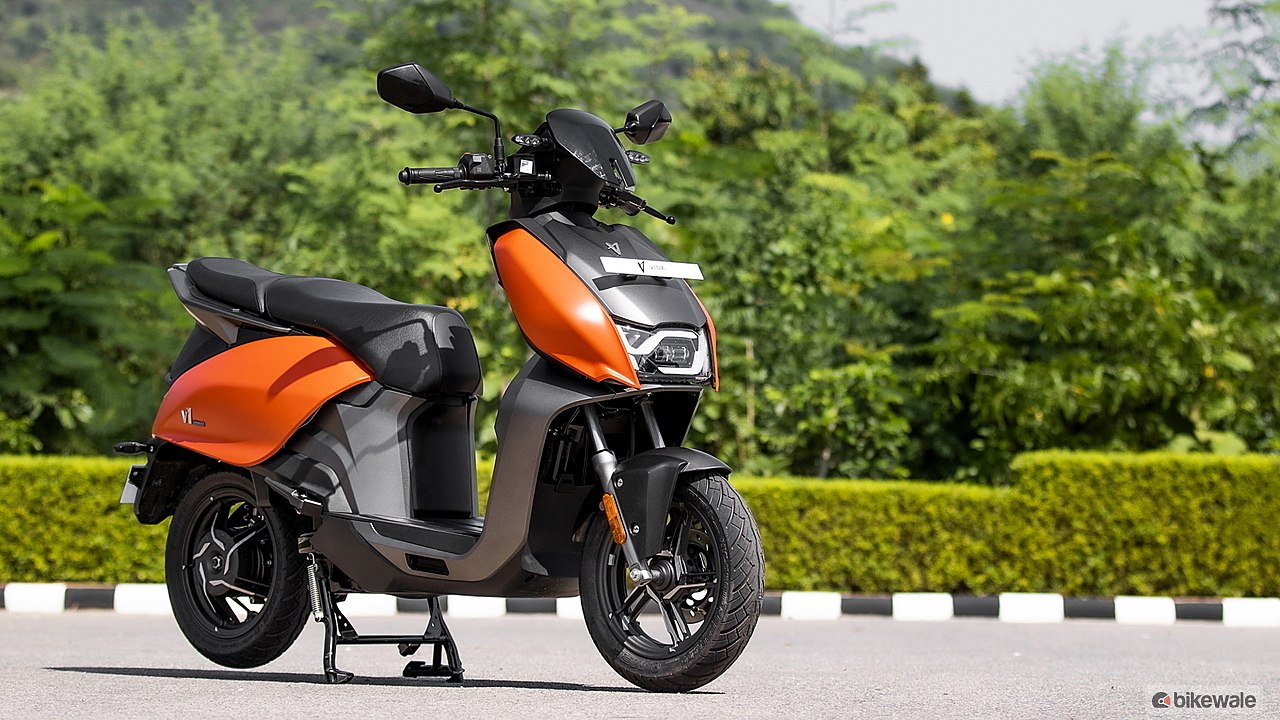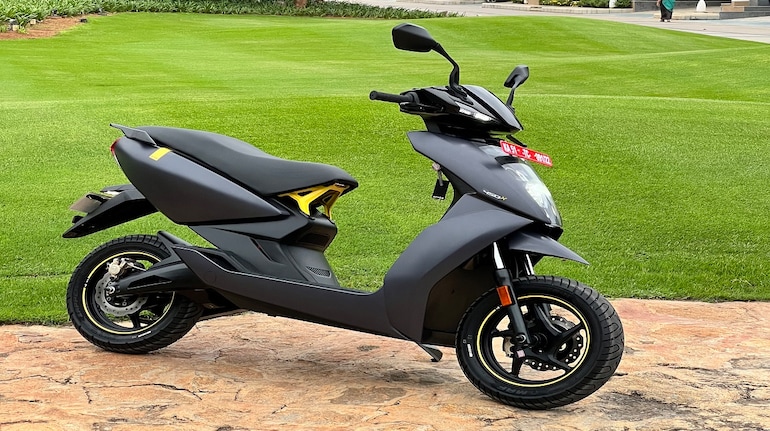Hero Moto To Power Up The EV Game; India’s Promising Electric Two-Wheeler Market, Size, Growth, Opportunities, And Forecast
Hero MotoCorp is set to make significant strides in the electric vehicle (EV) market with plans to introduce three electric two-wheelers in the fiscal year 2025. The company aims to not only capture the domestic market but also establish a global presence for its electric offerings. The company's CEO, Niranjan Gupta, envisions a future where India plays a key role in global electric two-wheeler sales while concurrently fostering a thriving domestic market for battery electric vehicles. India's electric two-wheeler market is on the cusp of significant growth driven by factors such as technological advancements, environmental consciousness, and strategic government initiatives.

Hero MotoCorp, the largest two-wheeler manufacturer in India, has outplayed ambitious plans for the electric vehicle (EV) market, intending to launch three electric two-wheelers in the fiscal year 2025.
The company’s vision extends beyond the domestic market, aiming to market its electric two-wheelers globally; therefore, Hero MotoCorp is actively expanding its product lineup, upgrading its retail outlets, and laying the groundwork for a comprehensive charging infrastructure.
Despite the competitive landscape in the EV market, Hero MotoCorp perceives it as a catalyst for fostering innovation. During an event introducing ‘Hero Mavrick,’ the first premium motorcycle developed in collaboration with American motorcycle manufacturer Harley Davidson, Hero MotoCorp CEO, Niranjan Gupta, revealed plans to introduce three electric two-wheelers in the mass market during FY25.
Niranjan Gupta stressed the importance of India positioning itself as a global player in electric two-wheeler sales while simultaneously nurturing a domestic market for battery electric vehicles.
He disclosed that one of the upcoming electric scooters would target the B2B segment, while the other two would cater to the mid and entry segments for mass-market consumers.

The Game Plan
Gupta outlined Hero MotoCorp’s strategy for the next year, indicating the launch of a mid-priced scooter and an economically priced scooter, stating that the Vida range would be designed to be aspirational, accessible, and affordable, aligning with diverse consumer preferences.
While acknowledging the 36% increase in electric two-wheeler sales in India to 859,000 units in CY2023, Gupta acknowledged that Hero MotoCorp lags behind Ola Electric, TVS Motor Company, and Bajaj Auto in the electric vehicle market.
However, he remains unfazed by the competition, emphasizing that the company’s ongoing efforts, such as expanding its product range, upgrading retail stores, and collaborating with Ather Energy to establish a widespread charging infrastructure, are strategic steps that will not only address competition but also drive innovation within the industry.
In the context of a marathon, it’s rare to find the eventual winner leading in the first 100 meters,” remarked Gupta. “Honestly, the electric vehicle (EV) sector is akin to such a race where success is about doing things right. When considering our entire portfolio development, store upgrades, and charging infrastructure, I believe the real game in EV has only just begun.”
Gupta emphasized that increased competition in the EV market translates to more players, heightened competition, and, consequently, more innovation.
He views this as a positive development not just for companies but for the country as a whole and outlines the importance of not merely focusing on selling EVs within India but also strategizing how India can become a global hub for EV sales.
Hero MotoCorp, with a presence in 47 countries, currently exports its range of petrol-powered motorcycles and scooters globally, and plans are underway to initiate exports of their electric model, Vida, in the near future.
Despite potential geopolitical challenges, Gupta outlined plans to rapidly scale operations in the top-10 markets, including Nigeria, Mexico, and Bangladesh, while efficiently nurturing other markets.
At the same time, future market entries, such as Brazil and Southeast Asia, will be determined based on strategic considerations.

Discussing the Indian electric vehicle segment, Gupta predicted consolidation, considering that EVs currently represent only 15% of the two-wheeler market.
He anticipates a significant churn in the segment within the next three years, recognizing that ongoing subsidies cannot be sustained indefinitely.
To meet growing demand, Gupta revealed that Hero MotoCorp plans to increase the production of electric bikes to 10,000 units per month by March, up from 6,000 units in January.
The company is set to open bookings for the Mavrick in February, with deliveries scheduled to commence in April. Gupta sees substantial potential in the roadster segment, projecting its growth from 800,000 units to a million units in the next couple of years.

India Electric Two-Wheeler Market; Dimensions, Expansion, Prospects, And Projections
The electric vehicle (EV) sector in India has experienced substantial growth in recent times, and statistics predict that the market for electric two-wheelers is set to achieve a noteworthy milestone, reaching USD 1,028.04 million by 2028, with a robust Compound Annual Growth Rate (CAGR) of 29.07%.
This remarkable expansion is attributed to the increasing adoption of electric vehicles, fueled by technological advancements and heightened environmental consciousness.
Factors Driving the Growth of the Electric Two-Wheeler Market in India
1. Rapid Adoption and Technological Advancements – The substantial growth in the electric vehicle sector is primarily propelled by the swift adoption of EVs, coupled with ongoing technological advancements that enhance the appeal and efficiency of electric two-wheelers.
2. Economic Factors and Environmental Concerns – Rising per capita income and concerns about escalating pollution levels from Internal Combustion Engine (ICE) vehicles are key drivers for the heightened demand for electric two-wheelers.
Simultaneously, government initiatives, such as subsidies under FAME II and state EV policies, have further accelerated the acceptance of these vehicles.
3. Research and Development Initiatives – Leading companies and emerging players in the industry, such as Hero MotoCorp, are placing significant emphasis on research and development.
This focus aims to introduce advanced technologies and features while maintaining an affordable price range, ultimately attracting more customers and boosting sales.
4. Environmental Benefits and Lower Operating Costs – Electric two-wheelers contribute to environmental preservation by reducing air pollution and carbon emissions.
Additionally, they entail lower maintenance requirements and exhibit lower overall operating costs compared to ICE vehicles, given their fewer moving parts.
5. Government Incentives and Enhanced Infrastructure – Incentives provided under government schemes, coupled with the development of an improved charging infrastructure and electric vehicle financing options, play a substantial role in fostering the growth of electric two-wheeler sales in India.

Market Size and Growth Projection
Herein, we look at the existing market size and forecast the growth trajectory, offering valuable information for stakeholders engaged in strategic decision-making and for investors.
Market Segmentation Insights
A thorough segmentation analysis based on vehicle type, battery type, voltage capacity, battery capacity, and range offers a comprehensive understanding of specific market segments and their respective growth patterns.
Market Segmentation and Trends
Vehicle Type Segmentation – While electric scooters/mopeds currently dominate the market, there is an anticipated substantial growth in the motorcycle segment by 2028.
The market is led by lithium-ion batteries and the 48-59 V category, providing high performance, zero-emission features, and competitive pricing.
Segments with battery capacities below 2 KWh and a range of 50-100 km command a significant market share, indicating affordability and practicality for Indian consumers.
Challenges Hindering Market Growth
Despite promising prospects, several challenges impede the rapid growth of the electric two-wheeler market in India; for example, the inadequate charging infrastructure hampers widespread adoption, limiting the feasibility and convenience of electric two-wheelers.
Another is the limited consumer awareness regarding the benefits of electric vehicles, coupled with relatively higher initial costs, which acts as a barrier to widespread adoption.
The global economic crisis triggered earlier by the pandemic and, in the current context, the widespread geopolitical tensions may disrupt production and supply chains, affecting the two-wheeler industry and posing challenges for electric two-wheeler manufacturers.
Future Outlook
Despite the challenges highlighted above, the trajectory of India’s electric two-wheeler market presents a promising picture, notwithstanding the prevailing difficulties.
Escalating investments and collaborative initiatives are underway, aiming to achieve zero emissions and promote green energy. The recent upswing in sales, coupled with a projected Compound Annual Growth Rate (CAGR) of 27.62% in volume by 2028, signals a positive and vibrant future for the industry.
India’s electric two-wheeler market holds immense potential, propelled by a convergence of factors, including technological advancements, heightened environmental awareness, and proactive government initiatives and despite persistent challenges, the market is experiencing noteworthy growth, offering attractive opportunities for stakeholders.
The Last Bit, the future of India’s electric two-wheeler market, appears promising and dynamic despite existing challenges; investment and collaboration efforts are intensifying, with a collective goal of achieving zero emissions and promoting green energy.
The recent surge in sales, coupled with a projected CAGR of 27.62% in volume through 2028, shows the positive trajectory of the industry.
The electric two-wheeler market in India holds immense potential, fueled by a confluence of technological advancements, environmental consciousness, and government support.
While challenges persist, the substantial growth witnessed in the market presents lucrative opportunities for stakeholders and investors.





